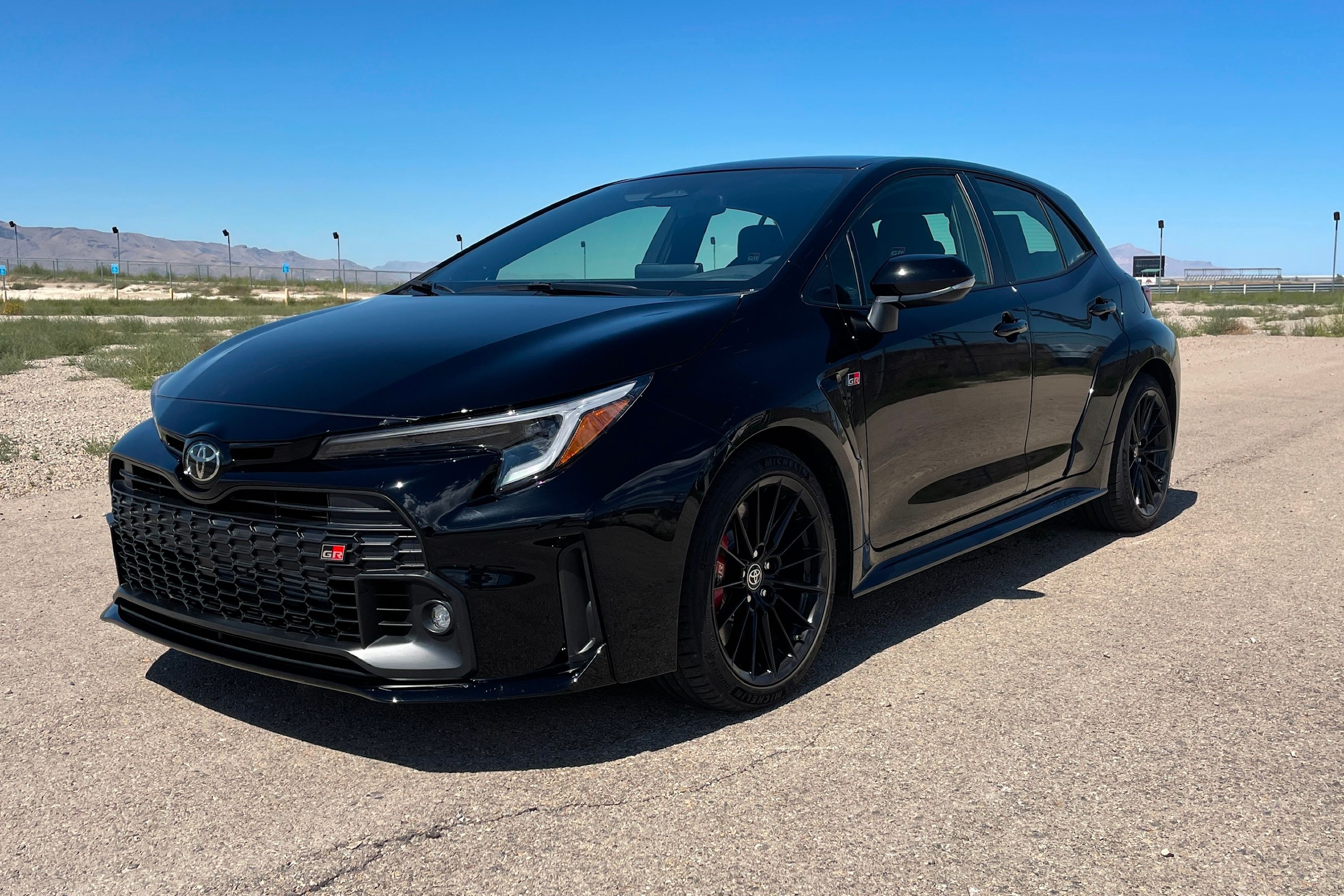
When news broke that Toyota was going to transplant the GR Yaris' guts into the existing Corolla hatch, the automotive community lost their collective minds. Japan's most desirable hot hatch since the Honda Civic Type R was coming stateside, albeit with some changes. And those changes are going to create a hugely different car, despite some common ground.
The common ground between the two is obvious: Toyota's 1.6-liter turbocharged three-cylinder and GR-Four AWD system. From there, well, the differences between these two rally cars for the road begin to make themselves apparent. Take the power figures, for example. The Toyota GR Yaris makes 257 hp and 266 lb-ft of torque, whereas the GR 'Rolla pushes out 300 hp and 273 lb-ft of torque. After that, the differences only grow.
Let's start with what is probably the most apparent difference between the two. The Toyota GR Corolla rides on the larger GA-C platform, as compared to the GR Yaris' GA-B platform. Stylistically, not much is shared. Perhaps the foglights. Of course, the Corolla features a larger five-door layout over the Yaris' three-door layout. The Yaris also comes standard with a forged carbon roof, something only available on the Circuit Edition GR Corolla, of which only 1,500 will be made.
However, the two share a very similar philosophy in the modifications made over the standard Toyota Yaris and Corolla, with structural reinforcements throughout the chassis, wider tracks, and extensive lightweighting via carbon fiber and aluminum where possible. Toyota also had to modify the floor of the GR 'Rolla to make room for the rear differential, yet another difference.
We mentioned the difference in power figures above, but that isn't all that separates these two cars' turbo-three powerplants (and their gearboxes as a result). Toyota needed more power out of the Corolla for a few reasons, and as a result, the new exhaust and an increase in boost pressure helped deliver it. We imagine the two will sound roughly similar, with the Yaris being slightly louder due to a shorter exhaust path. In addition to the difference in exhausts, the two make their power in slightly different ways, with peak torque running from 3,000-5,500 RPM in the 'Rolla compared to 3,000-4,600 RPM in the Yaris.
While the GR-Four AWD system is largely unchanged between the two, Toyota did tweak the gear ratios for the Corolla, if not by much. A simple change in the 'Rolla's final drive ratio to 3.350 undercuts the Yaris' 3.941 ratio. The result should be a slightly more manic gearbox feel from the Corolla. Happily, both share a six-speed manual gearbox, the only transmission option available.
When we first saw the GR Corolla, the wheels looked strikingly similar to the Yaris. However, they, along with other changes to the suspension side of the car, are totally different. Both wheels are 18 inches in diameter, but the Yaris gets Dunlop SP Sport Maxx tires instead of the Corolla's Michelin Pilot Sport 4 tires. Underneath those wheels, the two share a braking system, run by four-piston calipers and 356mm rotors in the front with 297mm rotors and two-piston calipers in the rear. The biggest changes to the unsprung side of these cars are still unknown, however.
With the GR Corolla coming in at 3,249 lbs, it's significantly heavier than the 2,822 lb Yaris. That will necessitate some significant suspension changes to account for the extra 427 lbs of mass. To find out just how drastic those changes are, we'll have to wait for more details or some seat time. In short, the two couldn't be more different despite their shared ethos and powertrain. Will the extra heft make the Corolla feel sloppier than the more rally-adjacent Yaris? We'll have to wait and see.
